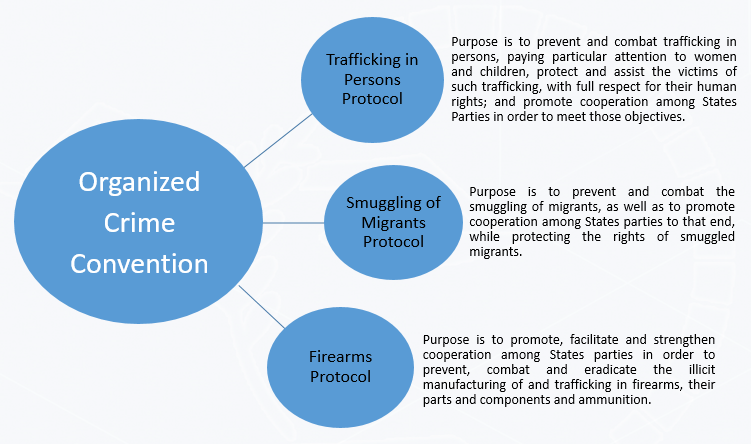- Adoption of the Organized Crime Convention
- Historical context: why Palermo?
- Features of the Organized Crime Convention
- The protocols
- Related international instruments
- United Nations Office on Drugs and Crime (UNODC)
- Conference of the Parties to the United Nations Convention against Transnational Organized Crime
- Summary
- References
Published in May 2018.
Regional Perspective: Eastern and Southern Africa - added in April 2020
This module is a resource for lecturers
The protocols
The Convention is complemented by three protocols as follows:
-
Protocol to Prevent, Suppress and Punish Trafficking in Persons, Especially Women and Children (Trafficking in Persons Protocol)
-
Protocol against the Smuggling of Migrants by Land, Sea and Air (Smuggling of Migrants Protocol)
-
Protocol against the Illicit Manufacturing of and Trafficking in Firearms, Their parts and Components and Ammunition (Firearms Protocol)
Figure 14.1Goals of the Organized Crime Convention Protocols
The conclusion of the Protocols to the Convention reflects the recognition of the fact that certain activities in which organized criminal groups engage require specific actions foreseen by the provision of the Protocols. For more information on the Protocols and the crimes they cover, see the sections on firearms trafficking and trafficking in persons and smuggling of migrants of Module 3.
